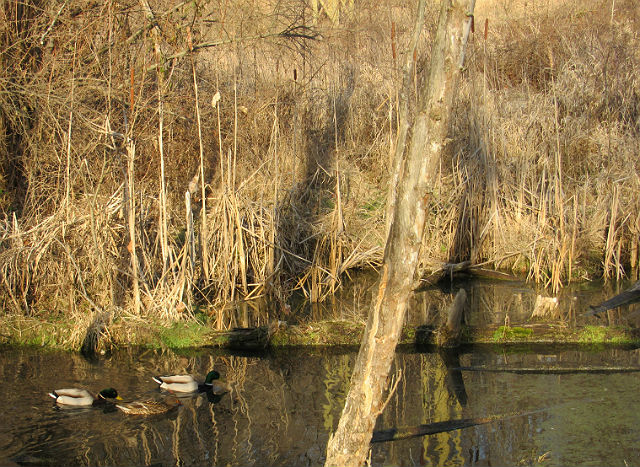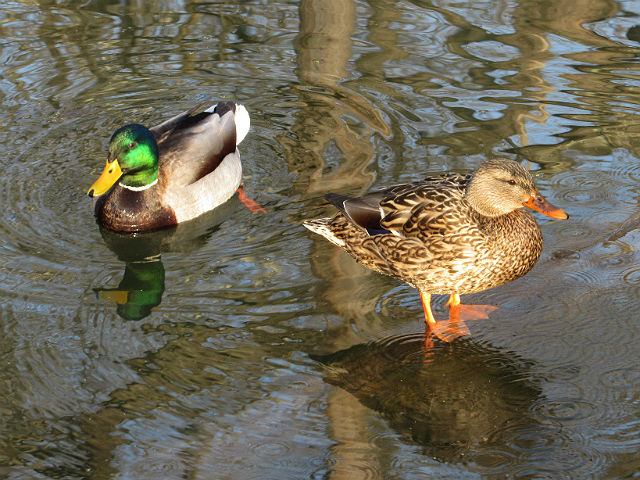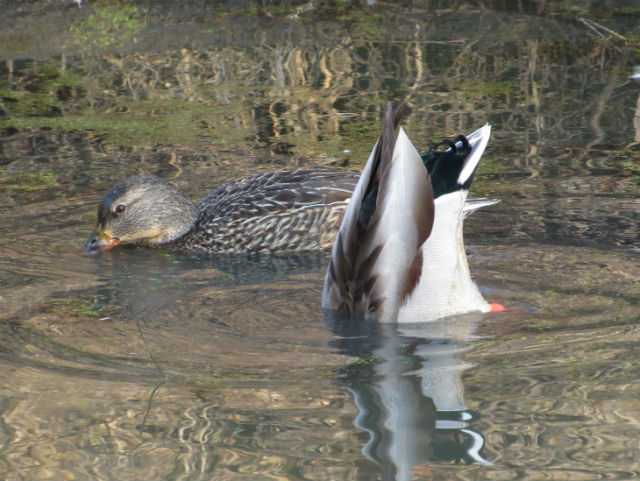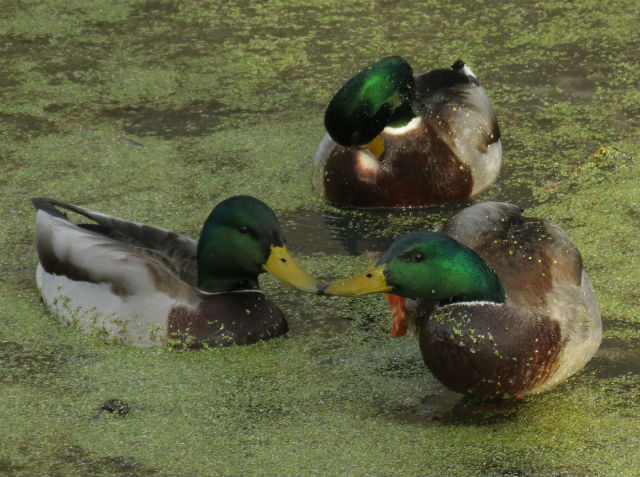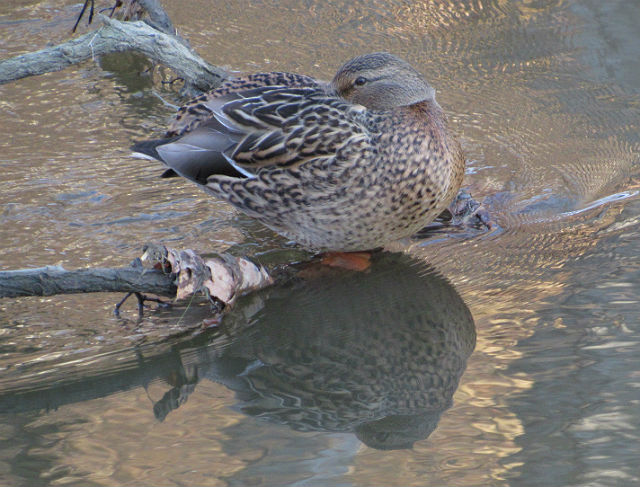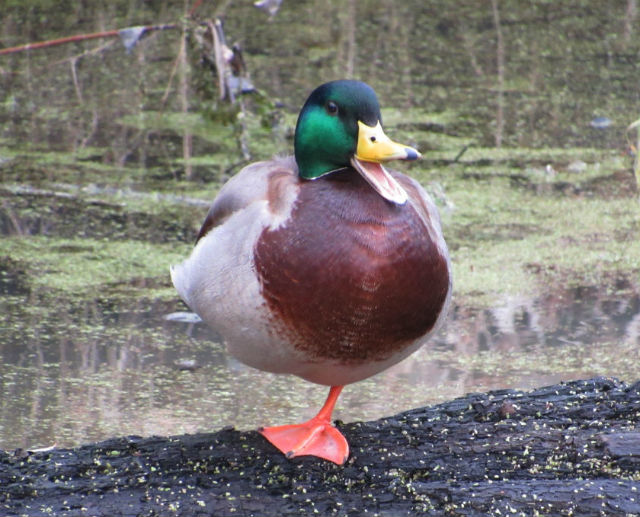If someone is at a park is feeding bread to ducks, there’s a good chance there are Mallards in the fray. Perhaps the most familiar of all ducks, Mallards occur throughout North America and Eurasia in ponds and parks as well as “wilder” rivers, lakes and estuaries. This bird is found in both freshwater and salt water wetlands.
The males (drakes) have a glossy green head and are grey on their wings and belly, while the females (hens) have mostly brown-speckled plumage.
Mallards eat water plants and small animals and are social animals, tending to congregate in groups or flocks of varying sizes. Mallards are “dabbling ducks” – they feed in the water by tipping forward and grazing on underwater and above-water plants. They almost never dive.
These ducks can be very tame, especially those residing in city ponds. This species is the main ancestor of most breeds of domesticated ducks.
Scientifically known as Anas platyrhynchos, the Mallard was one of the many bird species originally described by Carl Linnaeus in his 18th-century work Systema Naturae, and still bears its original binomial name. The scientific name is from Latin Anas, “duck” and Ancient Greek platyrhynchus , “broad-billed” ( from platus, “broad” and rhunkhos, “bill”).
Common over most of the northern hemisphere, the Mallard is a well-known wild duck to many people; it is thought to be the most abundant and wide-ranging duck on Earth.

